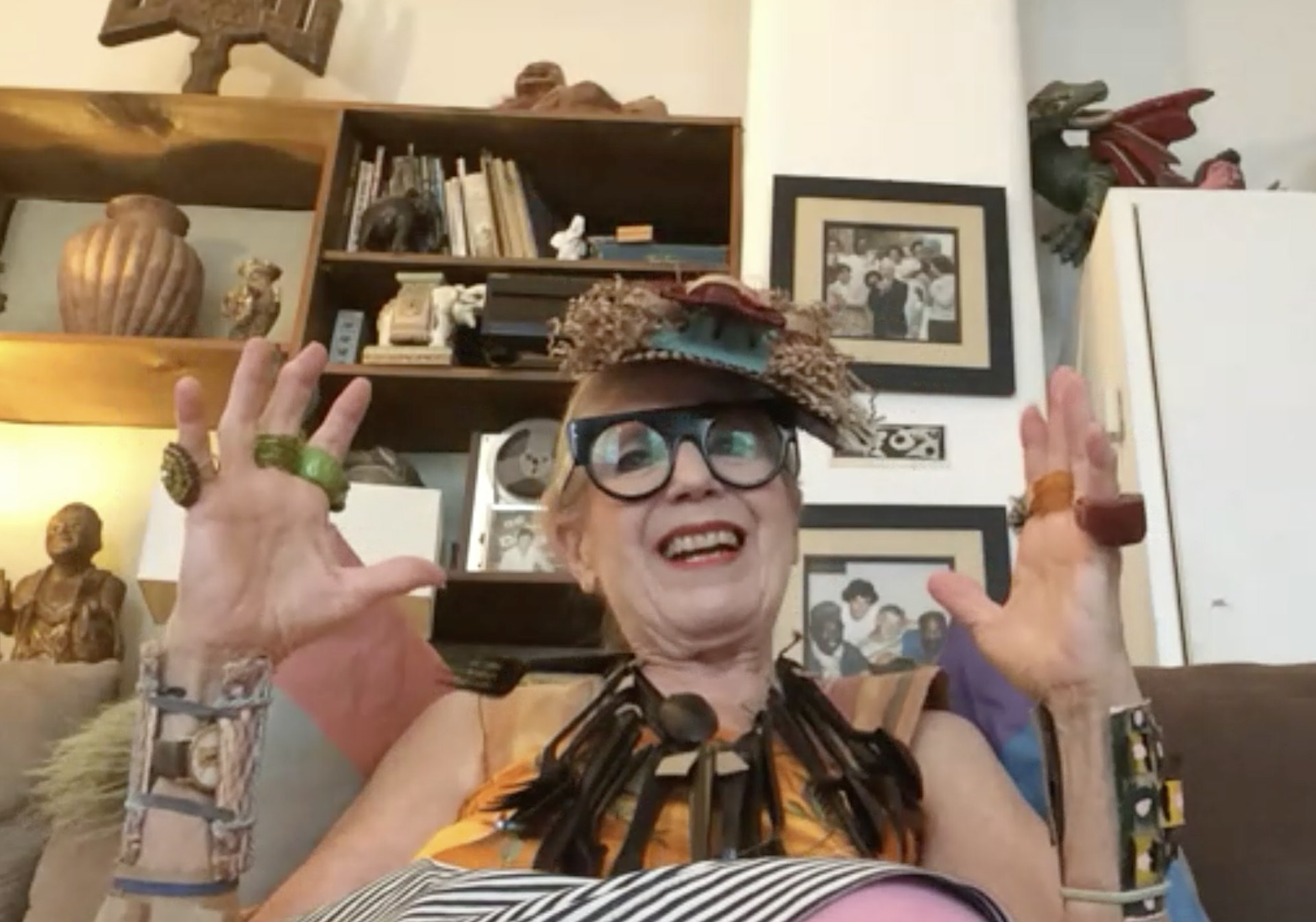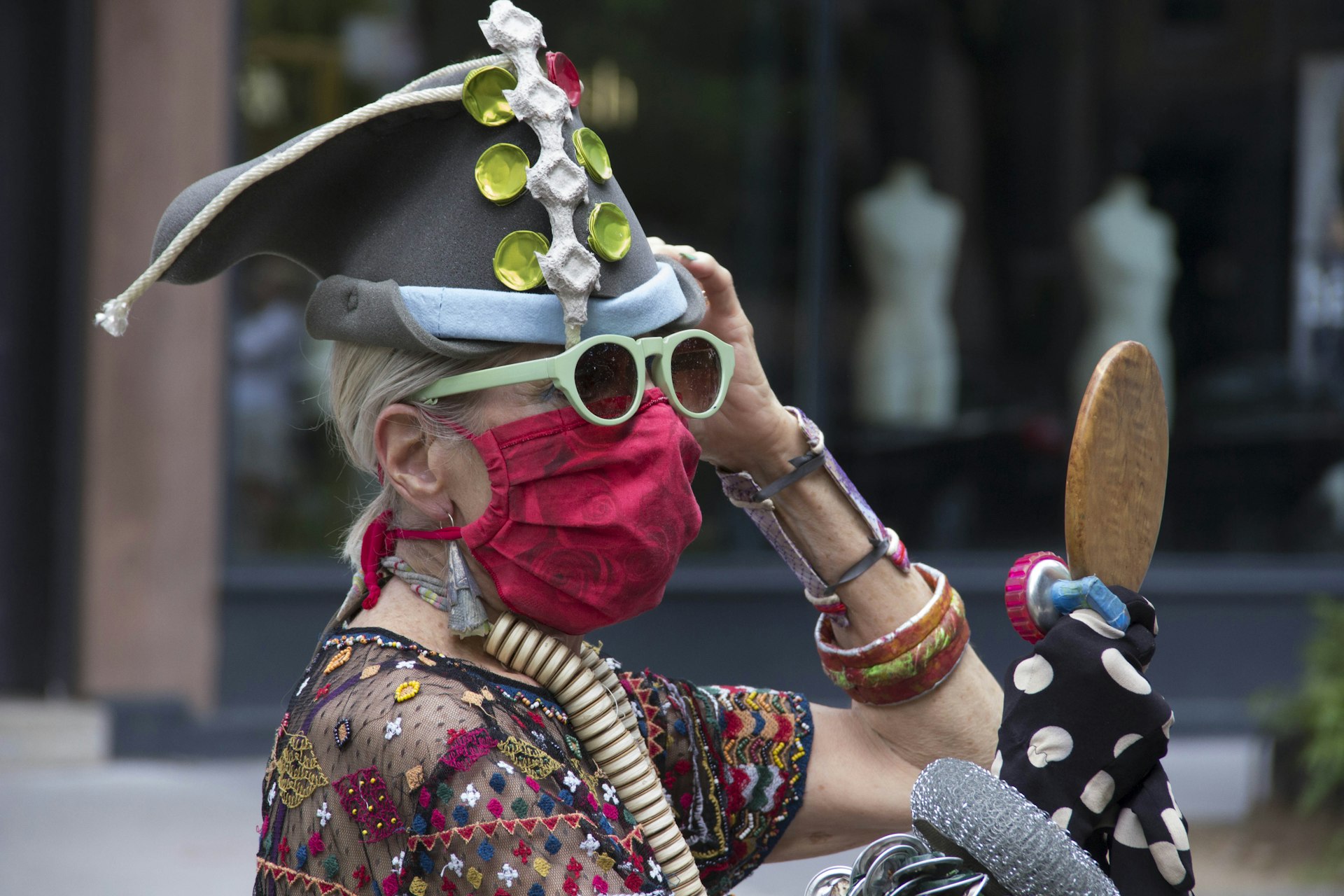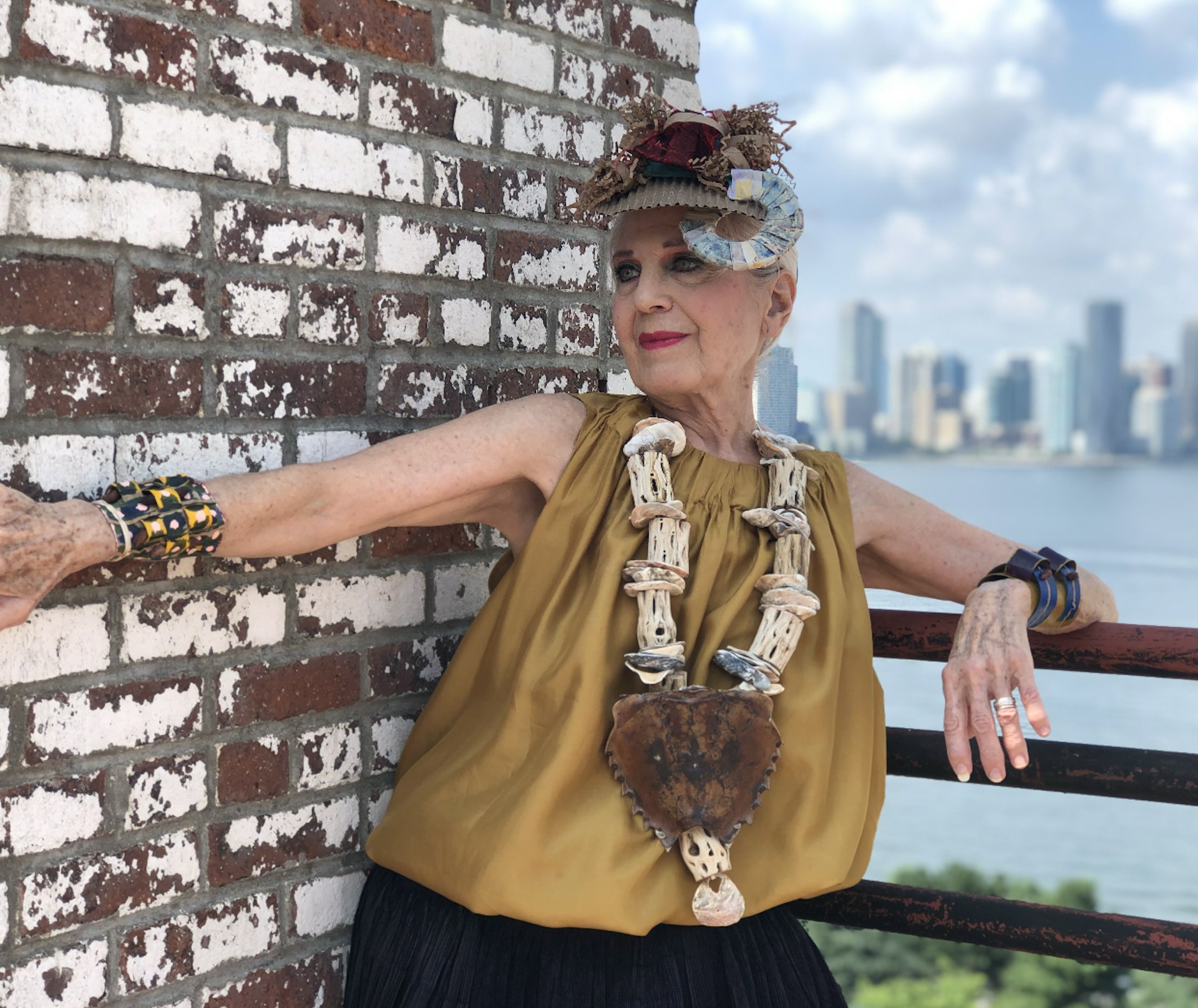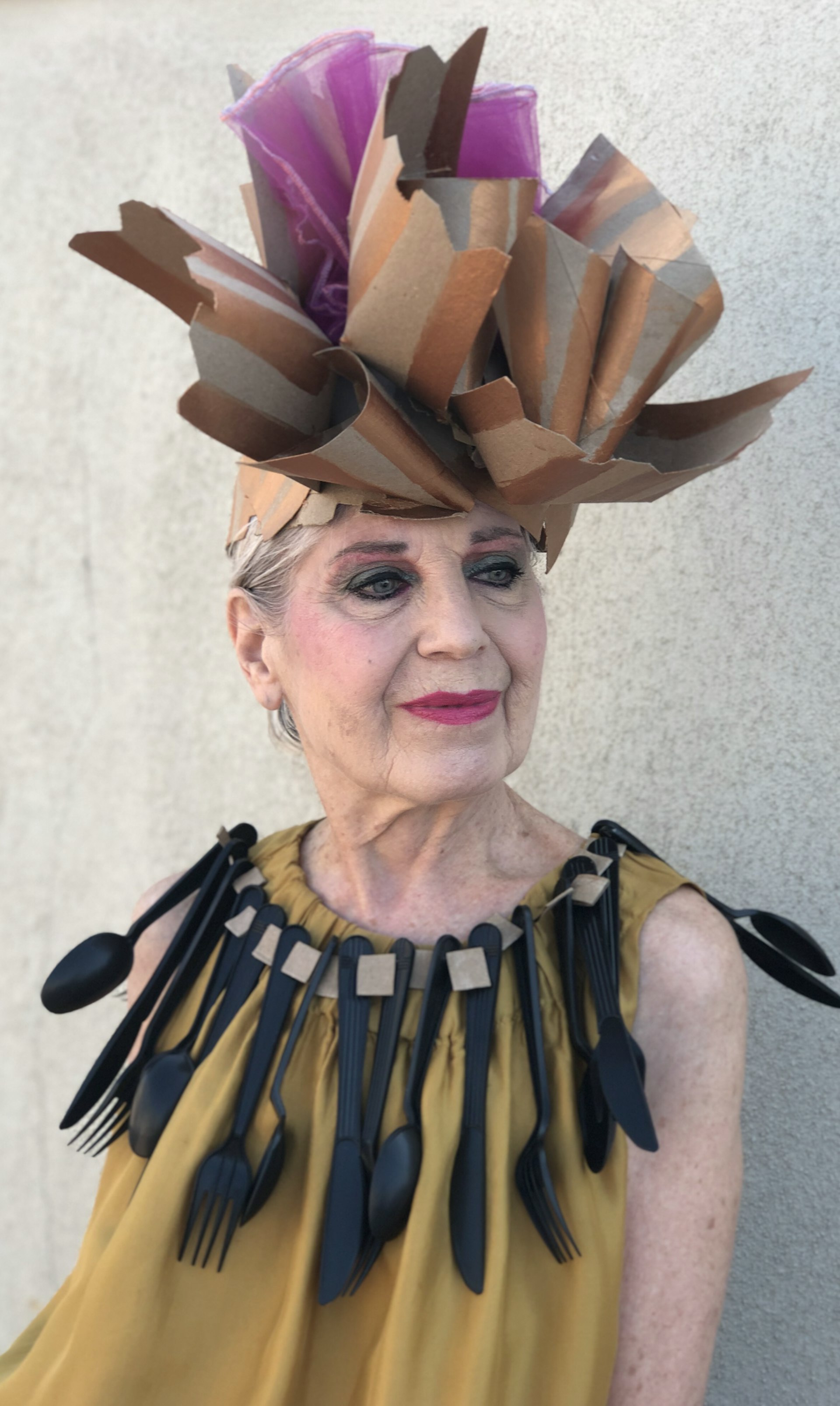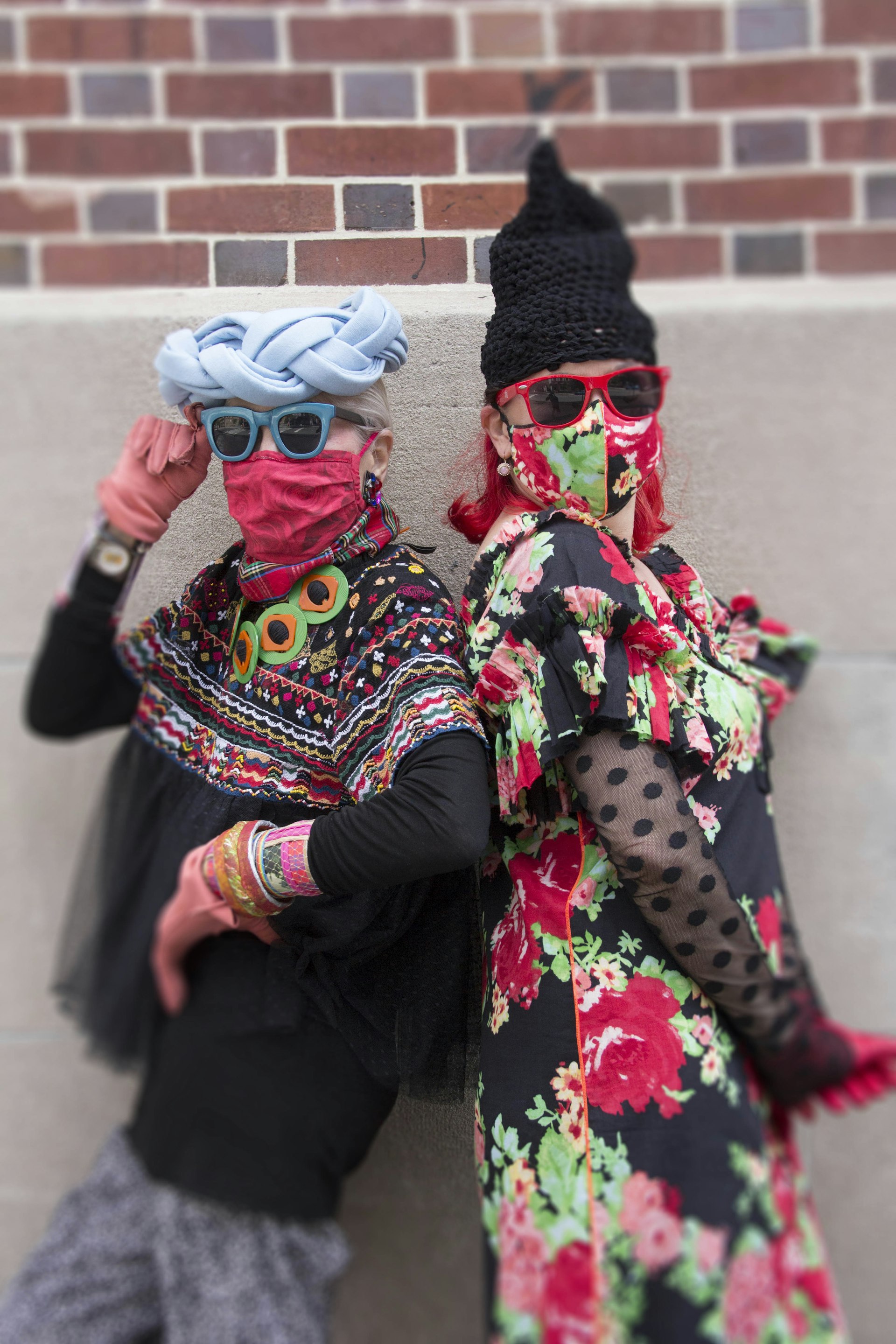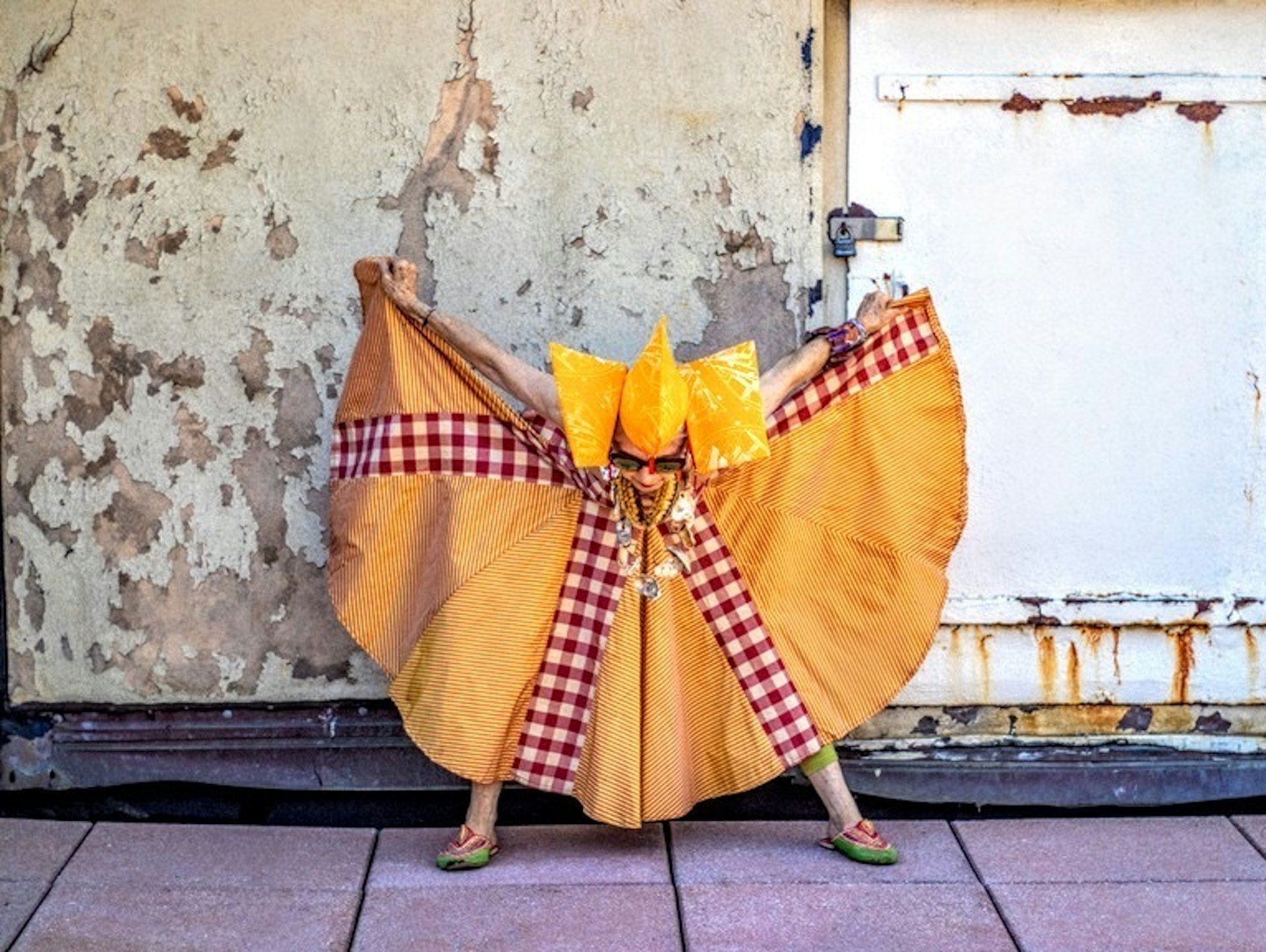January 05, 2021
Living through Transition: Debra Rapoport and the healing power of creativity
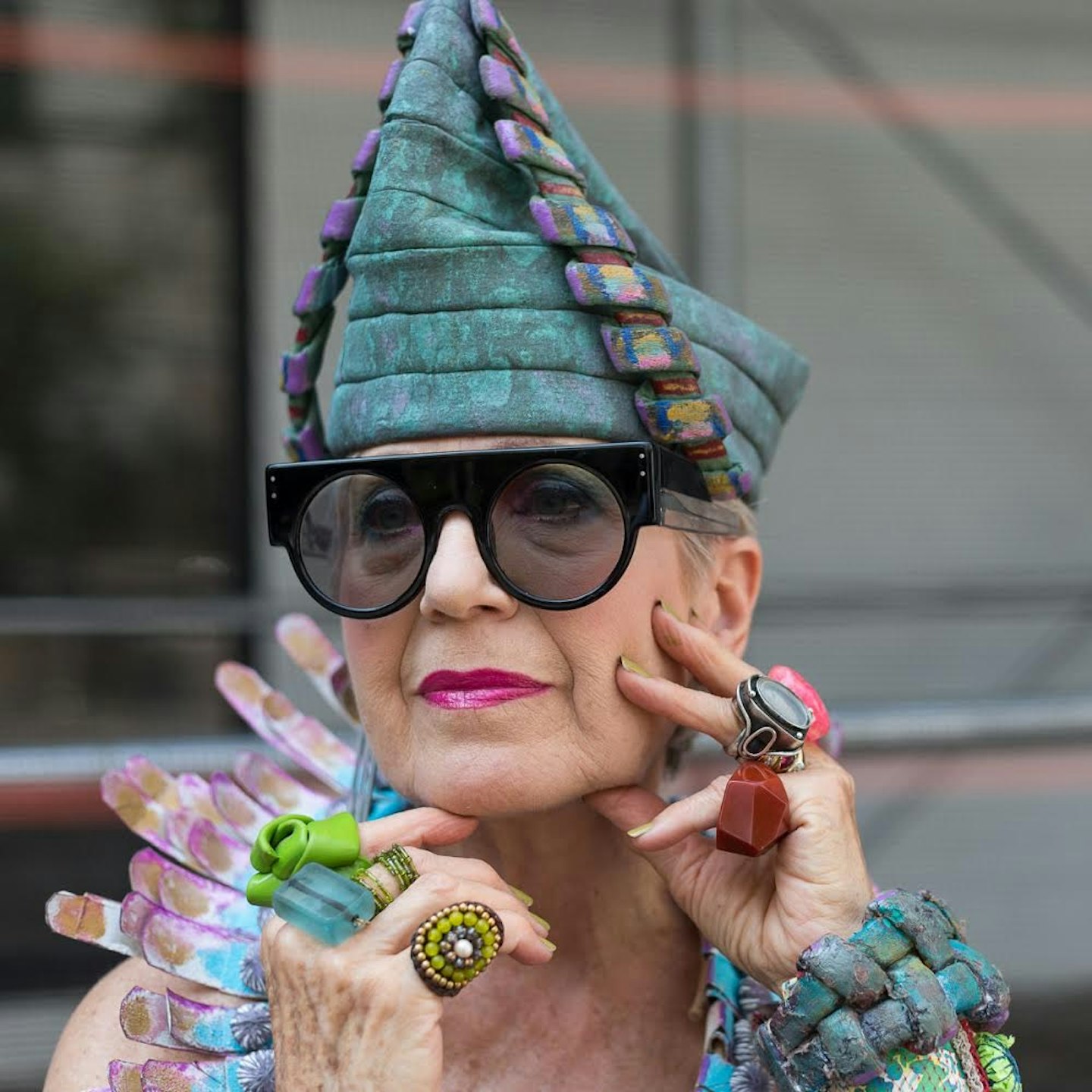
Art is a reflection of the world around us. When the world shifts and we lose our collective way, artists are often the first to make sense of what’s changed.
Out of uncertainty, fear, and pain, comes artistic expression that inspires growth, transformation, and a renewed sense of purpose. It ignites a response within us. These times of transition become periods of reflection and growth – we go back to square one and give ourselves permission to dream again.
"Living through Transition" is a special interview series exploring the perspectives of artists around the world who have lived transformational lives, and whose work and philosophies carry messages that resonate now more than ever.
__
Debra Rapoport shares the healing power of learning to see creatively
As I sit across the digital table from artist and Advanced Style fashion icon Debra Rapoport, I find myself drawn to her magnetic charm. Even Zoom can’t dull her vibrant creative spirit. Her smile, her warmth, her optimism – it’s infectious. This is the contagion we need today.
She is wearing a fabulous hat she made from materials found at home – a corrugated cake disc, a paper fruit basket, a plastic cover wrapped in magazine paper, bits of shredded paper. When she speaks and gestures with her hands, her necklace of plastic spoons and forks jangles with joy.
She has always worked with recycled materials because they speak to her. Now they’re speaking to me, in a cheerful, confident language of vitality that can only come from something that’s been given a second life.
A screenshot of Debra from our conversation on Zoom, wearing her designs.
A unique relationship with found materials
Ever conscious of the environment, Debra has always made art forms for the body using anything she could find that was recyclable – from found twine, scrap metal, and video tape to paper towels and toilet paper rolls (“they’ve got such a great form”).
In this way, she’s made a career out of transformation. Her work has been exhibited around the world and is owned by major art institutions such as the Metropolitan Museum of Art, the L.A. County Museum, the Museum of Fine Arts in Houston, and the Philadelphia Museum of Art – where she recently had pieces on display as part of the exhibition Off the Wall: American Art to Wear.
“Residue Rapoport” is what Debra cheekily calls her creative process of collecting and manipulating found objects and turning them into wearable art.
“I’ll be walking down the street or find something in the mail, and suddenly there’s a relationship,” she explains. “I can’t bear the thought of it going into the landfill! But the first thing that happens is that relationship between us – like, oh my God this is fantastic, I can see where this is going to go and how I can manipulate it. I’ve always been hands-on. I have to feel the materials because my hands and the materials make that relationship and they speak. And I’ve always loved to dress up, so I turned my artform into dressing up.”
Finding her creative truth at a young age
This is something she’s been doing since she was three. We talk about what it was like for her growing up, and Debra grows wistful. She counts her mother and grandmother among her biggest creative influences and credits them with encouraging her to find her truth early on.
“My mother was so creative and was such a searcher. She shopped beautifully, dressed beautifully, dressed us beautifully. Anything my sister and I did creatively she was right there, like a third sister, totally supporting us. I’m living the life that she would have lived. We were soulmates from the very beginning.”
As a child, she was always encouraged to play. Creativity was her and her sister’s north star. Debra recalls a story about them at their grandmother’s house – a lesson that’s stayed with her ever since. “We’d go to the old sewing machine and dump out the drawer with the buttons. And my grandfather would say, ‘Oy oy oy, they’re making a mess!” And Grandma would say, ‘No no, be quiet, they’re being creative.’ And that still runs through every cell in my body. There’s no such thing as making a mess. It’s about letting the creative juices just do what they have to do.”
Debra wearing a hat she made during lockdown using packing foam, an egg crate piece, blue paper towel, and crushed wine bottle caps. Photographed by Charles Gonzalez.
Creativity as a way of healing
For Debra, creativity is the key to unlocking your truth and finding what makes you tick. “Where there is creativity, there are no rules. Where there are no rules, there is no fear. We’re so used to trying to fit in a box, and that's killing us. I think we have to get past all the rules to be free.”
The pandemic, the economic decline, the social injustices and unrest...the turbulence of this year has reinforced her belief that creativity is healing. It’s in us all, and it’s in everything we do. “Whether you’re gardening, bringing up a child, or making a pot of soup and deciding, am I going to make it like grandma or am I going to put more jalapenos in it because I like it picante – you’re making it up as you go along! We’re all creative. It’s about making a mess – you’re creative when you’re making a mess.” Her grandma’s wisdom rings true, loud and clear.
We speak about self-reflection in the midst of the pandemic. Now more than ever is a time to get back to the basics – to what really matters. For Debra, happiness is about finding your truth and following it. She hopes her art inspires people to find what gives them pleasure in being creative, and that being creative helps them find joy, opens their hearts, and makes them feel fulfilled.
“I have a mantra called the four Ts. The first one is truth. We all know our truth – it’s just been buried very deep inside of us. If we go deep inside, we know who we are. And then we have to trust it. Our culture wants us to judge it, and criticize it, and say no, I can’t really trust that. But you’ve got to trust it, and then you’ve got to be tolerant. You’ve got to tolerate yourself and the situation and say, yes – that is who I am. And then you have to embrace the whole thing with tenderness, and just put it out there in the world and give everybody else the space to have their four Ts.”
She looks at me, eyes wide. “It can be that simple.”
Reflecting on a more conscious world
Truth, trust, tolerance, and tenderness. The purity of these chosen words feels so timely – a cure for the collective emotional suffering the world experienced this past year.
Debra reflects on the effect the pandemic has had on her native New York. “I don’t recognize my city. It feels foreign. We live in the West Village, in a bubble. Our world has become very small. The rest of the city just feels like – do I even know what’s out there? Do I even really remember what it was like? Everything feels alien. I think it’s going to come back, but slowly and differently. It will have an effect on art, all the emotions that everybody’s feeling with everything that’s going on. Expression of a lot of sadness, a lot of grief, a lot of loss.”
Nevertheless, she’s optimistic that we’ll come out of these hard times more aware of our truth, ourselves, each other, and our planet. “At the start of the year, I was saying 2020 means clear seeing. Then the pandemic hit and [her partner] Stan said to me, ‘So where’s your clear seeing now?’ And I said, that’s what the pandemic is about. We have to sit down and clearly see where we’re going and what has to be next.”
Debra modeling the hat she wore during our interview. Photographed by Natalia Rudychev.
Debra wearing the necklace she wore during our interview. Photographed by Natalia Rudychev.
Clarity as a way forward
She is hopeful that this “timeout” will give us the clarity we need. Her vision for the world on the other side of this pandemic? “More consciousness about the climate, food, health, and healing. How are we going to save our planet? I think that’s the underlying issue. Some of these creative types have come up with ways that actually can replenish the planet. It’s just an awakening that we all have to be part of.”
She points to her friend, designer Martina Dietrich, and the folks behind Fab Scrap, an NYC-based nonprofit that recycles leftover fabric material, as examples of what’s been inspiring her these days in the world of sustainable fashion. “Martina does one-of-a-kind couture clothing and it’s all zero waste. And I know two young students who did their entire masters thesis at Parsons and spent only $300 because they bought all the material they needed at Fab Scrap, instead of paying $300 a yard for some fancy brocade! There are those avenues that people are going down that I think are valuable.”
Debra (left) in a hat she made from blue paper towels, with friend and fashion designer Martina Dietrich. Photographed by Charles Gonzalez.
Growing through sharing
At 75, Debra stays curious and creative through the people she surrounds herself with. She has many younger friends that are out there searching and seeking, and who aren’t afraid to come to her and the other women of Ari Seth Cohen’s Advanced Style movement.
“I love that I’m able to do these kinds of [interviews] and share what I know. I don’t know a lot about a lot of things, but I know what works for me...so that’s what keeps me going. I’m really happy and grateful because it feeds me, and hopefully it feeds others. Sharing is so important.”
Embracing health, healing, and happiness
And how does she see the role of art, artists, makers, and our own creative processes right now? Making and creating with your hands can be meditative, which goes back to the idea of creativity as a means of healing. “I think we have so much pent-up energy to express,” Debra says.
She brings up the bread-baking craze of the early pandemic days as an example. “I just think people want to get in there and be part of a process, and I think that’s going to continue.”
Back in September, she and her friend, fashion designer Martina Dietrich, hosted a three-day workshop for New York Textile Month called ‘More with Less.’ Its purpose? “Mending as a meditation, and mending in all ways. I think that will be another phase – people are going to start repairing, mending, redoing, repurposing, and reinventing.”
These days, Debra finds herself drawn to the themes of health, healing, and happiness. “Style is healing,” she explains. “ To get dressed up is an act for me – I’m reaching inside and seeing who I am today.”
Her words echo in my ears. Perhaps it’s why I made the choice today to dress myself in gold, my favorite color. The moment I put on my gold dress and a swipe of red lipstick, I felt better than I had in months. I felt more like myself, more whole.
Healing through self-expression – this is what creativity is all about. This is Debra’s golden nugget of wisdom.
Debra wearing one of her fantastical hat creations made from three airline toiletry pouches. Dress and photograph by Natalia Rudychev.
Looking to learn a skill? Take a virtual class at home or experience culture in a unique way while you travel abroad.
Explore our fiber and textile artist apprenticeships.
__
Written by Carla Ballecer
For more stories, tips, and new artist updates, subscribe here.
